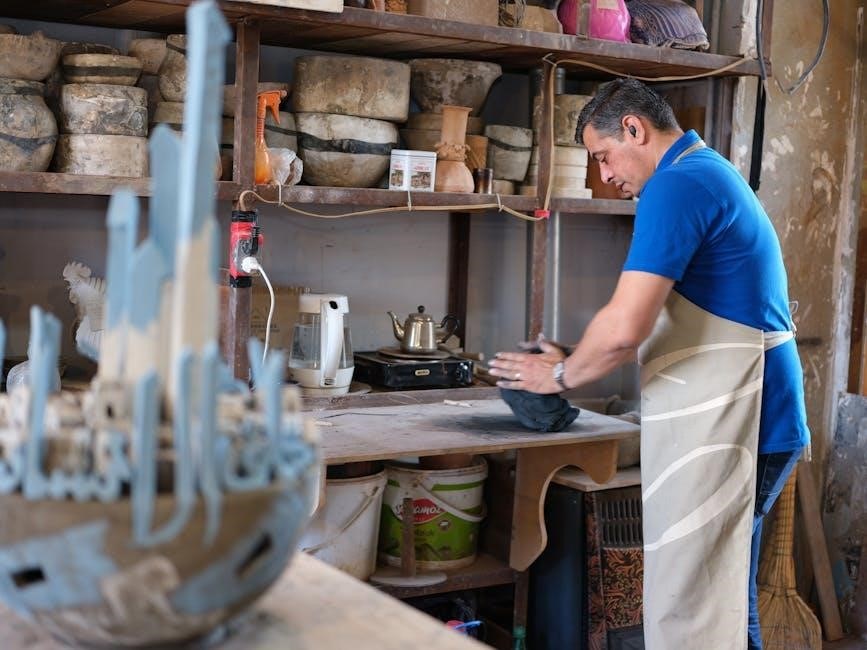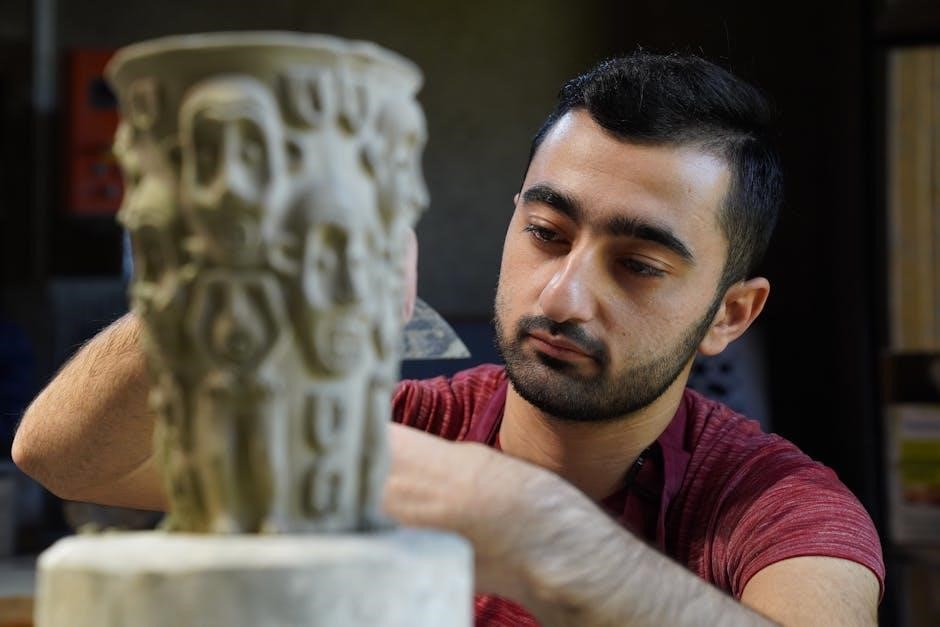The first counselling session with a child is a cornerstone for building trust and understanding their emotional world. It involves play therapy, creative activities, and establishing a safe, non-judgmental space to explore feelings and concerns. This initial interaction sets the tone for future sessions, focusing on rapport-building and identifying the child’s unique needs. The counsellor’s approach must be age-appropriate, empathetic, and tailored to the child’s developmental stage, ensuring they feel heard and supported. The goal is to create a foundation for open communication and growth.
1.1 Importance of the First Session
The first counselling session with a child is crucial as it lays the foundation for trust, comfort, and open communication. It provides an opportunity to understand the child’s emotional and behavioral challenges while establishing a safe space for expression. This initial interaction helps the counsellor gauge the child’s developmental level, identify key issues, and set the tone for future sessions. A positive first session fosters engagement and cooperation, making the child more receptive to the counselling process. It also allows the counsellor to adapt their approach to the child’s unique needs, ensuring interventions are effective. Additionally, involving parents or guardians in this session helps align goals and fosters a collaborative approach to supporting the child. A successful first session is essential for building rapport and creating a strong therapeutic alliance, which is vital for long-term progress.
1.2 Goals of the Initial Counselling Session
The primary goals of the initial counselling session with a child are to establish trust, create a safe environment, and lay the groundwork for open communication. The counsellor aims to help the child feel comfortable expressing their emotions and concerns. Another key objective is to assess the child’s needs, challenges, and developmental level to tailor future sessions effectively. Building rapport is essential, as it encourages the child to engage actively in the process. Additionally, the session seeks to identify the child’s strengths and resilience, which can be leveraged for positive growth. Involving parents or guardians is also a goal, as their insights and support are crucial for the child’s progress. Finally, the session introduces the child to therapeutic techniques, such as play or art therapy, to help them navigate their emotions and develop coping strategies. These goals collectively set the stage for a meaningful and impactful counselling journey.
1.3 Key Considerations for Child Counselling
When conducting the first counselling session with a child, it is crucial to consider their developmental stage, emotional readiness, and unique needs. The counsellor must adapt communication strategies to the child’s age and understanding, using non-verbal cues and play-based approaches when necessary. Ensuring confidentiality and explaining the boundaries of the therapeutic relationship are essential to build trust. Cultural sensitivity and awareness of the child’s background are also vital to create an inclusive and respectful environment. Additionally, the counsellor should be prepared to address potential resistance or reluctance, using patience and empathy to encourage openness. Involving parents or guardians in the process, while maintaining appropriate confidentiality, can provide valuable insights and support for the child’s progress. Finally, the counsellor must remain attuned to the child’s emotional state, ready to adapt techniques to meet their needs effectively.
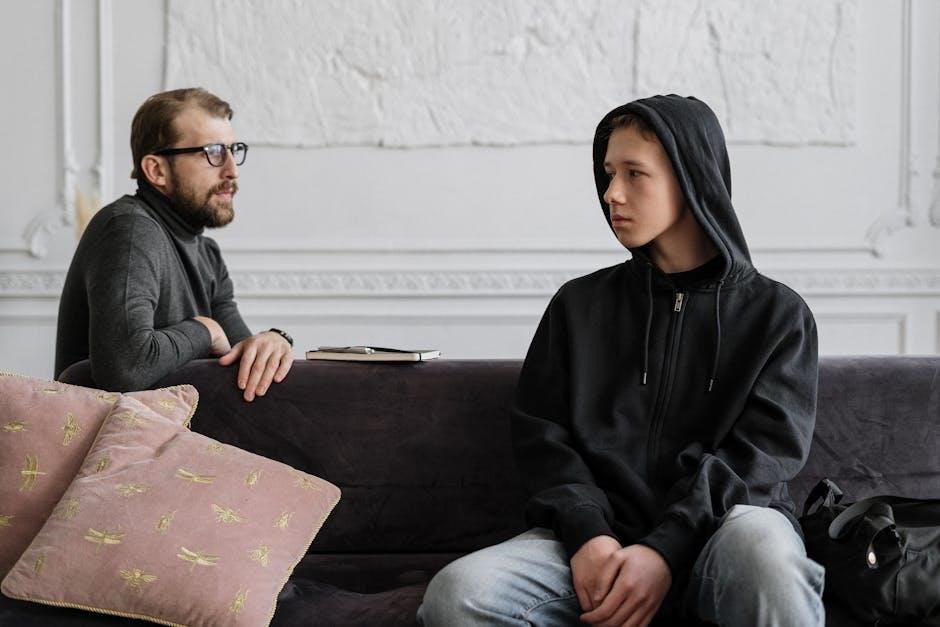
Preparation for the First Counselling Session
Preparation involves gathering background information, setting clear objectives, and creating a comfortable environment. Involving parents or guardians ensures alignment with the child’s needs and supports a collaborative approach for their well-being.
2.1 Understanding the Child’s Background
Understanding the child’s background is crucial for an effective first session. Gather information about their family dynamics, educational history, and any prior counseling experiences. This includes details about their parents, siblings, and caregivers, as well as any significant life events or challenges. Medical history, developmental milestones, and behavioral patterns should also be considered. This background knowledge helps tailor the session to the child’s unique needs and ensures a personalized approach. It also aids in identifying potential triggers or sensitivities, enabling the counselor to approach topics with care. Additionally, understanding the child’s cultural and socioeconomic context can provide insights into their values and beliefs, fostering a more empathetic and inclusive environment. By thoroughly understanding the child’s background, the counselor can establish a strong foundation for trust and effective communication. This step is vital for creating a supportive and non-judgmental space during the initial session.
2.2 Setting Clear Objectives for the Session
Setting clear objectives for the first session is essential to ensure a focused and productive interaction. These goals should be specific, measurable, and aligned with the child’s needs and circumstances. Collaborate with the child and their guardians to establish realistic expectations, ensuring everyone is on the same page. Objectives may include building rapport, identifying key concerns, or introducing basic coping strategies. Prioritize age-appropriate goals to match the child’s developmental level. Clearly communicating the session’s purpose helps the child understand what to expect, reducing anxiety. Having defined objectives also provides a sense of direction, allowing the counselor to guide the session effectively. This step is critical for creating a structured yet flexible framework, ensuring the session remains purposeful and meaningful. By setting clear objectives, the counselor can address immediate needs while laying the groundwork for future progress.
2.3 Creating a Safe and Comfortable Environment
Creating a safe and comfortable environment is vital for a successful first counselling session with a child. Ensure the physical space is child-friendly, with age-appropriate seating, toys, and art supplies to foster engagement. Use calming colors and soft lighting to create a relaxed atmosphere. Establish clear boundaries and expectations to provide a sense of structure and security. Be approachable and warm in your demeanor, using a calm tone of voice to help the child feel at ease. Allow the child to explore the space at their own pace, giving them a sense of control. Ensure confidentiality and privacy to build trust, making the child feel safe to express themselves. Incorporating familiar objects, like a favorite toy, can also provide comfort. By creating a nurturing environment, you help the child feel secure and more willing to participate actively in the session.
2.4 Involving Parents or Guardians
Involving parents or guardians in the first counselling session with a child is essential for building trust and ensuring collaborative support. Begin by fostering open communication, allowing them to share their concerns and expectations. Provide clear information about the session’s purpose and how their involvement can aid the child’s progress. Encourage parents to ask questions and express their observations about the child’s behavior or emotional state. It’s important to involve them in setting initial goals, ensuring alignment between home and therapy environments. Always maintain confidentiality while keeping parents informed about the session’s general focus. By empowering parents with tools and strategies, they can continue supporting the child’s growth outside the session. This partnership strengthens the therapeutic relationship and enhances the child’s sense of security and cooperation in the counselling process.
Building Rapport with the Child
Building rapport with the child is crucial for establishing trust and fostering a positive therapeutic relationship. Use empathy, active listening, and age-appropriate communication to create a safe space for expression and connection.
3.1 Establishing Trust in the First Session
Establishing trust in the first counselling session with a child is foundational for a successful therapeutic relationship. Begin by creating a non-threatening environment where the child feels safe and valued. Use empathy and genuineness to connect, ensuring the child senses authenticity. Be transparent about the counselling process, explaining your role and the purpose of the session in age-appropriate terms. Encourage open communication by actively listening and validating their feelings. Avoid making assumptions or judgments, as this can create barriers. Pay attention to non-verbal cues, such as body language and tone of voice, to convey warmth and approachability. Building trust also involves respecting the child’s boundaries and allowing them to share information at their own pace. Cultural sensitivity is key; acknowledge and respect the child’s background to foster a sense of safety and connection. Trust is built over time, but a strong foundation in the first session sets the stage for future progress.
3.2 Using Age-Appropriate Communication
Using age-appropriate communication is crucial in the first counselling session with a child. It ensures the child understands and feels comfortable with the interaction. For younger children, simple language and playful approaches, such as storytelling or puppets, can be effective. With older children and adolescents, more direct conversation and respect for their developing autonomy are key. Non-verbal cues, like gestures and facial expressions, also play a significant role. Active listening and validation of their feelings help build rapport. Tailoring communication to the child’s developmental level fosters engagement and trust, making the session more productive. This approach also helps in addressing their unique needs and encourages them to express themselves openly. By adapting your communication style, you create a supportive environment that promotes understanding and cooperation.
3.3 Active Listening Techniques
Active listening is a powerful tool in the first counselling session with a child, fostering a sense of safety and understanding. It involves giving the child your full attention, ensuring they feel heard and valued; Verbal cues, such as nodding, making eye contact, and using phrases like “I see” or “Go on,” encourage the child to open up. Non-verbal cues, like leaning forward slightly, also show engagement. Reflecting back what the child says, in your own words, helps clarify their thoughts and emotions. This technique builds trust and ensures the child feels understood. Active listening also involves maintaining a calm and empathetic tone, which can help the child feel more at ease. By prioritizing their words and emotions, you create a supportive environment that encourages honest expression and lays the foundation for a positive therapeutic relationship.

Assessing the Child’s Needs
Assessing the child’s needs involves identifying emotional, behavioral, and developmental challenges. Observations and interactions help understand their unique circumstances, guiding tailored support strategies.
4.1 Identifying Emotional and Behavioral Challenges
Identifying emotional and behavioral challenges in the first session is crucial for understanding the child’s needs. Observing the child’s demeanor, body language, and interactions provides insights into their emotional state. Active listening and open-ended questions help uncover feelings or concerns they may not express directly. Behavioral patterns, such as aggression, withdrawal, or hyperactivity, can indicate underlying issues; Standardized assessment tools or checklists may be used to identify specific challenges. It’s important to differentiate between typical childhood behaviors and potential red flags for deeper emotional distress. By creating a non-judgmental space, the child feels safe to express their emotions, allowing the counselor to pinpoint areas requiring support. Early identification of these challenges enables the development of targeted strategies to address them in subsequent sessions. This step lays the foundation for a tailored approach to the child’s unique needs and circumstances.

4.2 Evaluating the Child’s Cognitive and Developmental Level
Evaluating the child’s cognitive and developmental level is essential to tailor the counseling approach to their unique needs. This involves assessing their problem-solving skills, memory, and ability to process information. Observation of their communication style and interaction with toys or materials provides insights into their developmental stage. Standardized assessments or informal tools, such as puzzles or drawing tasks, can help gauge cognitive functioning. Understanding their developmental level ensures age-appropriate communication and activities. Identifying any delays or advanced abilities allows the counselor to adapt strategies. This evaluation also helps in setting realistic expectations and goals for the session. By aligning interventions with the child’s cognitive capabilities, the counselor can foster a more engaging and effective therapeutic experience. This step ensures that the session is both challenging and accessible, promoting the child’s active participation and understanding.
4.3 Exploring Family Dynamics and Support Systems
Evaluating family dynamics and support systems is crucial in understanding the child’s emotional and behavioral context. This involves assessing the relationships between the child and their caregivers, siblings, and other significant figures. Identifying positive interactions, communication patterns, and conflict resolution styles provides insights into the child’s support network. It is important to explore the level of emotional support available to the child and any potential stressors within the family environment. Understanding the family structure, roles, and expectations helps in identifying potential influences on the child’s behavior and well-being. Additionally, evaluating the involvement of extended family or community support can offer further context. This exploration aids in developing interventions that align with the child’s home environment and strengthens their support system. By engaging with caregivers, counselors can foster collaboration and create a cohesive approach to addressing the child’s needs. This step ensures a holistic understanding of the child’s world and its impact on their emotional health.
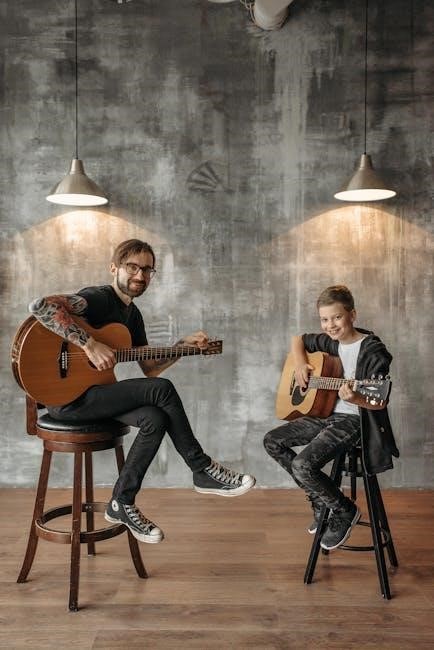
Therapeutic Activities for the First Session
Therapeutic activities like play therapy, art, and storytelling engage children, fostering trust and self-expression. These approaches help build rapport and provide insights into their thoughts and feelings.
5.1 Play Therapy Techniques
Play therapy is a powerful tool in the first counselling session with a child, fostering a non-threatening environment for expression and exploration. By using toys, games, and imaginative play, children can communicate their feelings and experiences in a way that feels natural to them. Techniques such as sandtray therapy, puppet play, and creative games allow the counsellor to observe and understand the child’s emotional state. Play therapy also helps establish trust, as the child feels safe to express themselves without the pressure of direct questioning. This approach is particularly effective for younger children who may struggle to articulate their emotions verbally. Through active participation or reflective observation, the counsellor can guide the child to explore their thoughts and feelings, making the session both engaging and therapeutic. Play therapy not only reduces anxiety but also lays the foundation for future sessions by building rapport and trust.
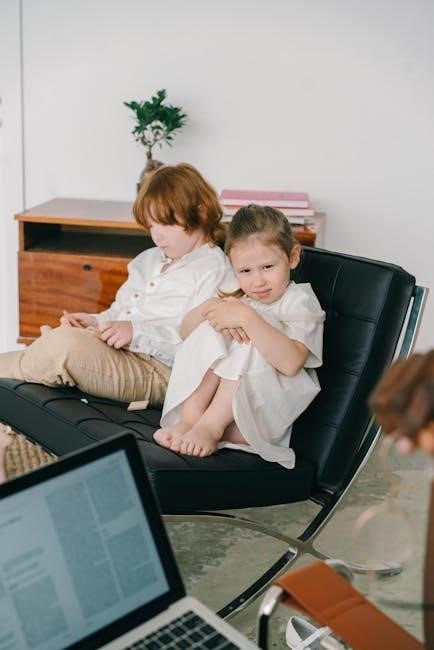
5.2 Art and Creative Expression
Art and creative expression are invaluable tools in the first counselling session with a child, offering a non-verbal medium for self-expression. Techniques such as drawing, painting, or crafting allow children to articulate their emotions and experiences in a way that may feel less intimidating than direct conversation. These activities can reveal underlying concerns or feelings that the child may struggle to verbalize. The counsellor can use the artwork to gain insights into the child’s emotional state and facilitate deeper exploration. Creative expression also fosters engagement and builds rapport, helping the child feel more comfortable in the counselling environment. By encouraging imagination and creativity, the counsellor can help the child process their thoughts and emotions in a safe and constructive manner. This approach is particularly effective for children who may find it challenging to express themselves verbally during the initial session.
5.3 Storytelling and Narrative Approaches
Storytelling and narrative approaches are powerful tools in the first counselling session with a child, offering a engaging and non-threatening way to explore emotions and experiences. These techniques allow children to express themselves indirectly, making it easier for them to share feelings they may otherwise find difficult to articulate. By using age-appropriate stories, metaphors, or fables, counsellors can help children connect with their emotions and experiences in a safe and relatable manner. Storytelling also fosters trust and rapport, as it creates a sense of collaboration and shared understanding. Additionally, narrative approaches can be adapted to the child’s interests and developmental level, ensuring relevance and engagement. This method not only helps uncover underlying concerns but also empowers the child to process their emotions creatively. It is a valuable way to make the first session meaningful and impactful, setting a positive foundation for future counselling sessions.
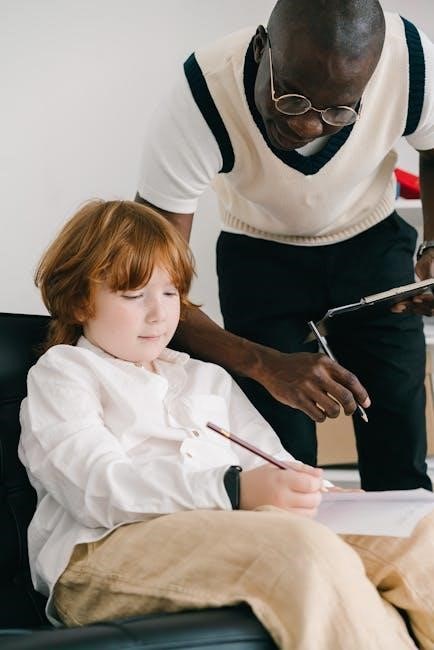
Handling Challenges in the First Session
Patience and empathy are key when addressing resistance or emotional outbursts. Creating a safe space fosters trust, helping children open up and engage positively in the session.
6.1 Managing Resistance or Reluctance
Managing resistance or reluctance in the first counselling session with a child requires patience and empathy. Establishing trust is crucial, as children may feel apprehensive or hesitant to open up. Counsellors should create a non-threatening environment by using play, art, or storytelling to help the child feel comfortable. Active listening and validation of their feelings can reduce resistance and encourage engagement. It is important to respect the child’s boundaries and allow them to set the pace of the session. Using age-appropriate language and avoiding confrontational techniques can also help minimize reluctance. In some cases, involving parents or guardians in the initial stages of the session can provide reassurance and facilitate trust. Consistency and positive reinforcement are key to building rapport and overcoming initial resistance, ensuring the child feels safe and supported throughout the process.
6.2 Addressing Emotional Outbursts
Addressing emotional outbursts in the first counselling session with a child requires a calm and empathetic approach. It is important to remain composed and avoid reacting negatively, as this can escalate the situation. Validate the child’s feelings by acknowledging their emotions and offering reassurance. Techniques such as grounding, deep breathing, or guided imagery can help the child regulate their emotions. Providing a safe space for expression and ensuring the child feels heard can reduce intensity. Non-verbal cues, such as gentle gestures or a comforting tone, can also de-escalate the situation. If the outburst persists, redirecting the child’s attention to a calming activity, like drawing or play, may be effective. Documenting the triggers and patterns of outbursts can inform future sessions and help develop strategies to manage such episodes more effectively. Reflection after the session can also guide improvements in handling similar situations.
6.3 Navigating Cultural and Individual Differences
Navigating cultural and individual differences in the first counselling session with a child requires sensitivity and adaptability. It is essential to respect the child’s cultural background and incorporate culturally relevant techniques. Being aware of cultural norms, values, and communication styles can help build rapport and ensure the child feels understood. Additionally, recognizing individual differences in personality, developmental stage, and life experiences is critical; Counsellors should remain open to learning about the child’s unique perspective and adapt their approach accordingly. Using culturally sensitive materials and language can facilitate connection. Active listening and empathy are key to bridging cultural gaps. Involving parents or guardians in discussions about cultural values can also provide valuable insights. By fostering inclusivity and respect, counsellors can create a welcoming environment that honors diversity. This approach ensures the child feels safe to express themselves authentically, promoting a positive therapeutic relationship.
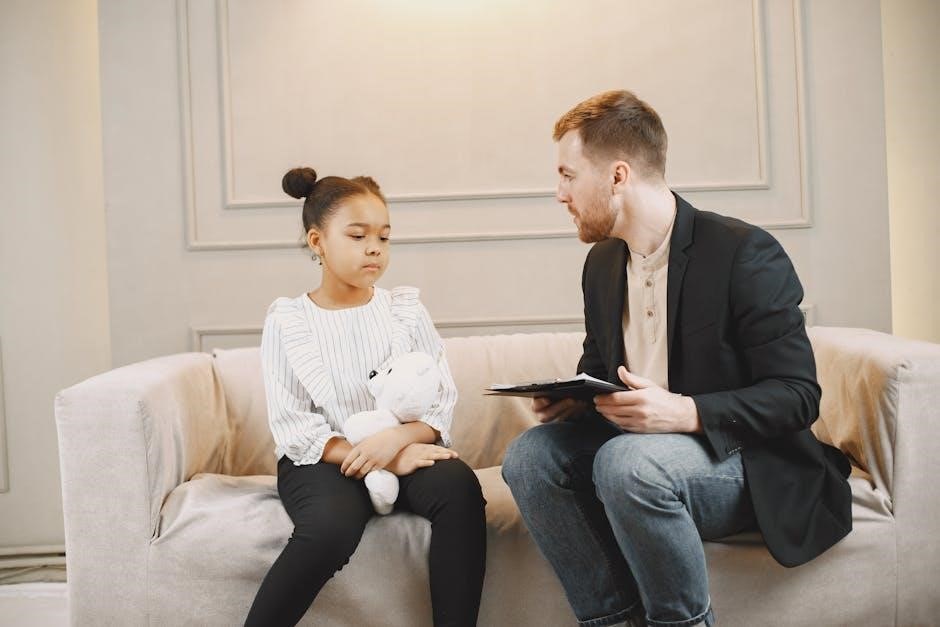
Documentation and Follow-Up

Documentation and follow-up are crucial for tracking progress and planning future sessions. Accurate records ensure continuity of care and inform parental communication, aiding in consistent support and reflection.
7.1 Recording Key Observations from the Session
Recording key observations from the first counselling session is essential for understanding the child’s emotional state, behavior, and engagement. Detailed notes help track progress and tailor future interventions. Documenting the child’s responses, body language, and communication style provides valuable insights. Noting themes or concerns expressed during play, art, or conversation helps identify patterns. Observations should also include the child’s reactions to activities and their ability to focus. This documentation serves as a reference for future sessions, ensuring continuity and informed decision-making. Additionally, it provides a clear record of the child’s initial presentation, which can be compared to later sessions to assess growth or areas needing attention. Accurate and thorough documentation is crucial for effective counselling and maintaining a comprehensive understanding of the child’s journey.
7.2 Setting Goals for Future Sessions
Setting clear and achievable goals for future sessions is vital for guiding the counselling process and ensuring progress. These goals should be based on the child’s needs, interests, and developmental level, as identified during the initial session. Goals should be specific, measurable, and time-bound, focusing on areas such as emotional regulation, social skills, or self-esteem. They should also align with the child’s strengths and challenges, ensuring a realistic pathway for growth. Collaborating with the child and their guardians in goal-setting fosters a sense of ownership and commitment. Additionally, incorporating age-appropriate therapeutic activities can help achieve these objectives. Regularly reviewing and adjusting goals ensures they remain relevant and effective. By establishing a clear direction, future sessions can address the child’s evolving needs and promote long-term positive outcomes;
7.3 Communicating with Parents or Guardians Post-Session

Effective communication with parents or guardians after the first session is essential for ensuring continuity and support for the child. This involves providing a summary of key observations, progress, and agreed-upon goals without breaching confidentiality. Parents should be informed about their child’s emotional state and any strategies they can implement at home to support the counselling process. It is also important to listen to their concerns and address any questions they may have. Regular updates help parents feel involved and empowered to contribute to their child’s growth. Scheduling follow-up sessions and maintaining open lines of communication fosters a collaborative relationship. This ongoing dialogue ensures that both the counsellor and caregivers are aligned in supporting the child’s well-being and development.


